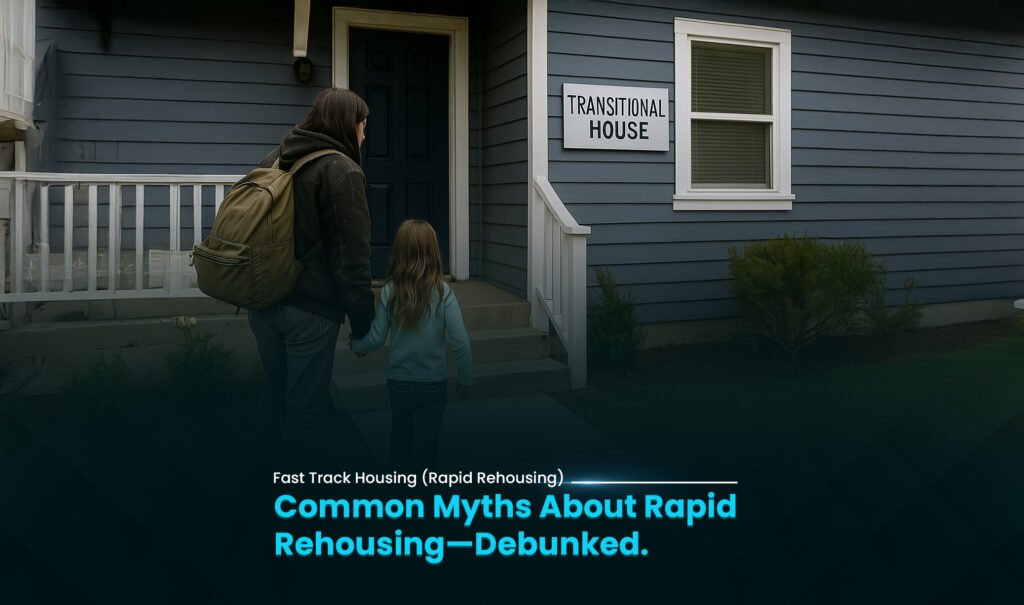Debunking Myths: The Truth About Rapid Rehousing
Rapid Rehousing has, consequently, revolutionized how communities address homelessness. It, furthermore, offers a swift and effective pathway to stable housing. Despite its proven success, various misconceptions, moreover, persist. These myths can, additionally, hinder understanding. They can, moreover, also deter people from seeking help. This blog, therefore, aims to debunk common myths about Rapid Rehousing. You will, furthermore, learn the truth behind its approach. You will, moreover, understand how it truly helps people facing homelessness.
Understanding the Core Principles of Rapid Rehousing
Rapid Rehousing is an intervention. It, furthermore, helps individuals and families. They are, moreover, experiencing homelessness. It, additionally, moves them quickly into permanent housing. It, furthermore, also provides time-limited rental assistance. Crucially, it, moreover, offers tailored supportive services. These services, consequently, address individual needs. The core principle is clear. Stable housing is, furthermore, the foundation for everything else. Once housed, people can, consequently, effectively address other life challenges. This “Housing First” approach forms its bedrock.
Myth 1: Rapid Rehousing is Just Giving Away Free Housing
This is, consequently, perhaps the most common misconception. Many believe Rapid Rehousing simply provides free, indefinite housing. This is, furthermore, far from the truth.
The Reality of Financial Assistance in Rapid Rehousing
- Time-Limited Support: Rapid Rehousing offers temporary financial assistance. This, furthermore, covers move-in costs. It, additionally, pays for initial rent. This aid is not open-ended. Its duration depends on individual needs. It, furthermore, typically lasts a few months.
- Phased Reduction: The rental assistance, consequently, usually decreases over time. This, furthermore, encourages clients to increase their income. It, additionally, prepares them for full financial responsibility. The goal is independence.
- Client Responsibility: Clients are, consequently, expected to work towards self-sufficiency. They, furthermore, contribute to rent as their income grows. They, moreover, also assume full financial responsibility once assistance ends.
Myth 2: You Need to Be Sober or Employed to Qualify for Rapid Rehousing
This myth often, consequently, deters those most in need. It, furthermore, suggests a lengthy process of “earning” housing.
The Reality of Eligibility for Rapid Rehousing
- “Housing First” Model: Rapid Rehousing operates on a “Housing First” philosophy. This means stable housing is the priority. It is not, consequently, conditional on sobriety. It does not, furthermore, require employment.
- Addressing Barriers After Housing: Mental health needs are, consequently, addressed after housing is secured. Substance use issues are, furthermore, also tackled once stability is achieved. Employment support begins once an individual is housed.
- Focus on Immediate Housing: The primary goal is to end homelessness quickly. Preconditions would, consequently, create delays. They would, furthermore, prolong the experience of homelessness.
Myth 3: Rapid Rehousing Doesn’t Provide Enough Support
Some believe Rapid Rehousing is a minimalist program. They think it, consequently, simply places people without sufficient follow-up.
The Reality of Supportive Services in Rapid Rehousing
- Individualized Case Management: Every client receives personalized support. A case manager, furthermore, works closely with them. They, additionally, assess specific needs. They, moreover, develop tailored service plans.
- Flexible and Targeted Support: Services are, consequently, provided “just enough, just in time.” This means support is flexible. It, furthermore, adapts to individual needs. It, additionally, focuses on maintaining housing.
- Connections to Community Resources: Case managers, furthermore, connect clients to vital services. This, moreover, includes job training. It, additionally, covers mental health counseling. It, furthermore, provides substance abuse treatment. Access to healthcare is, consequently, also facilitated.
- Problem-Solving: Case managers, furthermore, help clients navigate challenges. issues with landlords. They, additionally, help with budgeting. They, furthermore, provide crisis intervention.
Myth 4: Rapid Rehousing is Only for “Easy” Cases
This myth implies that Rapid Rehousing avoids complex situations. It, consequently, suggests it only helps those who are already mostly stable.
The Reality of Who Rapid Rehousing Serves
- Diverse Client Population: Rapid Rehousing serves a wide range of individuals. This, furthermore, includes families with children. It, moreover, covers veterans. It, additionally, also assists survivors of domestic violence. People with chronic mental health issues are served. Those with substance use disorders are, consequently, also helped.
- Addressing Complex Needs: While housing is rapid, the support is, consequently, comprehensive. Case managers, furthermore, address significant barriers. They, moreover, connect clients to long-term care. The program is, additionally, designed to be adaptable. It, furthermore, caters to varying levels of need.
- Proven Effectiveness: Studies show high housing retention rates. This, furthermore, includes individuals with complex histories. The model is, consequently, effective across diverse populations.
Myth 5: Rapid Rehousing is the Same as Transitional Housing
These two approaches both address homelessness. However, they are, consequently, fundamentally different. Many confuse their functions.
The Reality of Differences from Transitional Housing
- Permanent vs. Temporary Housing: Rapid Rehousing places clients directly into permanent housing. Transitional housing, furthermore, provides temporary, communal living. Stays are, consequently, typically 6-24 months.
- Speed of Placement: Rapid Rehousing aims for placement within days or weeks. Transitional housing often, consequently, involves waiting lists. It has a longer intake process.
- Service Intensity: Rapid Rehousing offers flexible, individualized support. Transitional housing, furthermore, typically provides highly structured, often mandatory, on-site services.
- Autonomy: Rapid Rehousing allows clients to choose their own units. They, furthermore, have landlord-tenant relationships. Transitional housing residents, consequently, live in program-controlled facilities.
Myth 6: Rapid Rehousing is a “Band-Aid” Solution
Critics sometimes dismiss Rapid Rehousing as a short-term fix. They argue it, consequently, doesn’t address root causes of homelessness.
The Reality of Long-Term Impact of Rapid Rehousing
- Foundational Stability: Stable housing is the essential first step. furthermore it, allows individuals to address underlying issues effectively. It is not an end in itself. It is a vital beginning.
- Prevention of Chronic Homelessness: By rapidly rehousing individuals, the program, consequently, prevents chronic homelessness. This, furthermore, reduces the overall duration of homelessness.
- Cost-Effectiveness: Studies show it is often more cost-effective. It is, furthermore, cheaper than prolonged shelter stays. It, additionally, frees up resources. This, consequently, allows more people to be served.
- High Housing Retention: Data consistently shows high rates of housing retention. A large majority of participants, consequently, remain housed years later. This, furthermore, demonstrates its long-term effectiveness.
Myth 7: Rapid Rehousing Disrupts Communities or Creates Problems
Some believe that quickly housing formerly homeless individuals causes neighborhood issues. They, consequently, fear increased crime or instability.
The Reality of Community Impact of Rapid Rehousing
Private Market Housing
Rapid Rehousing places individuals in scattered-site housing. Many begin living in private apartments as tenants of local landlords. This approach, furthermore, allows them to integrate into existing neighborhoods and participate in everyday community life.
Case Management Support
Clients also receive ongoing case management that supports their integration. Through this guidance, they learn good neighbor practices, address challenges early, and build positive community relationships.
Reduced Homelessness
Communities often notice visible improvements when homelessness declines. Public health outcomes improve as a result, and neighborhood safety frequently increases alongside these changes.
Positive Contributions
Once individuals achieve stability, they begin to contribute meaningfully to their communities. Many find employment, participate in civic life, and become productive, engaged members of society.
Conclusion
Rapid Rehousing is a highly effective, evidence-based solution to homelessness. It’s not a simple handout, but rather a strategic intervention. This approach provides immediate housing, offers time-limited financial assistance, and delivers individualized support services. By debunking common myths, we gain a clearer understanding of its profound impact. Rapid Rehousing empowers individuals and families to move from crisis to lasting stability. It transforms lives and contributes to building stronger, more compassionate communities for all.
National Hot Line for Homelessness


